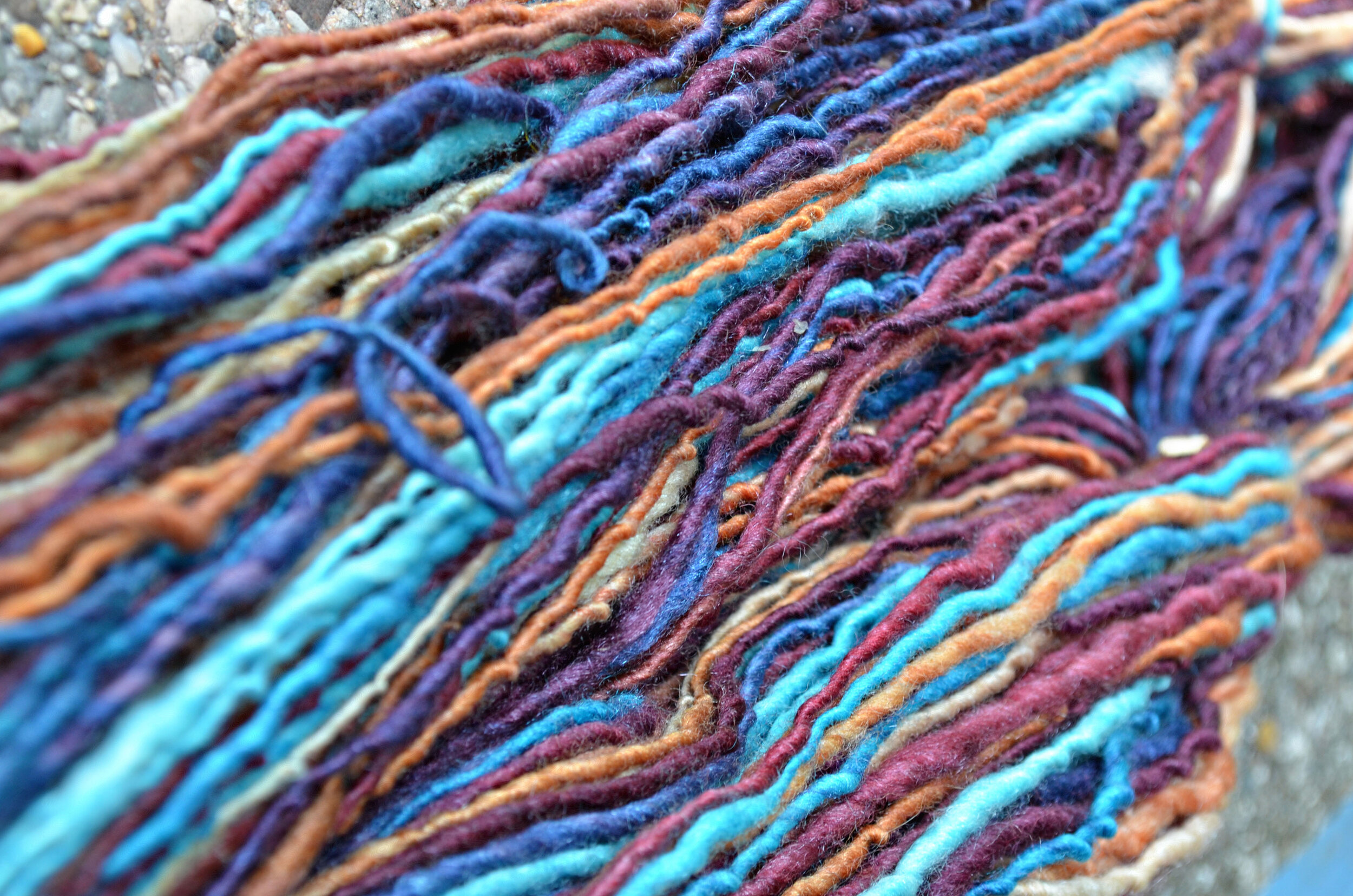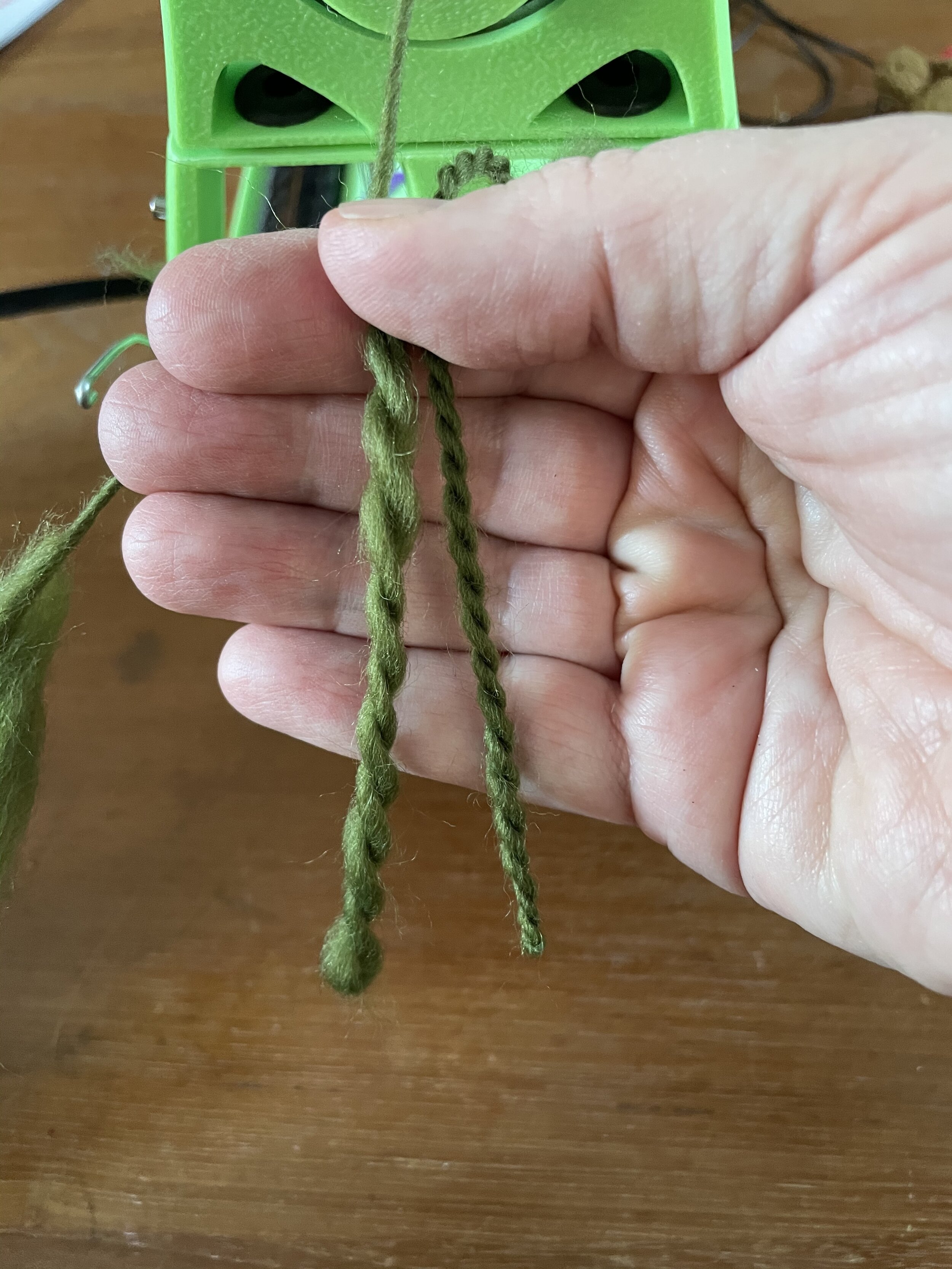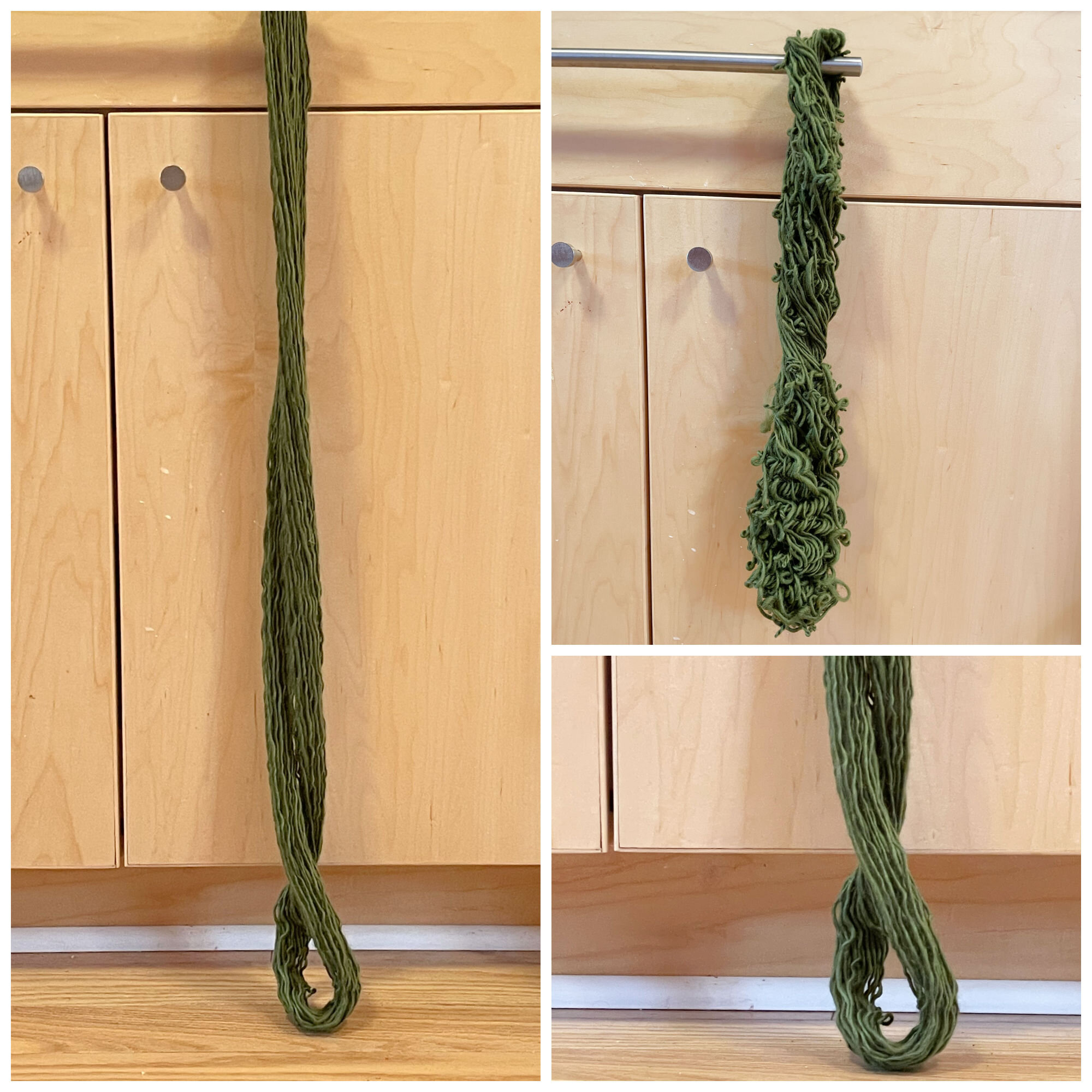Did you get your 2-ply and 3-ply yarns made? Isn't it facinating how different they look just as yarn?
Now it's time to spin our singles that will stay singles. If you've never spun singles that will stay singles it can be tricky. Like many things in spinning the concept is easy, but it takes practice.
The key thing is to spin a yarn with less twist. When we spin a single to ply, we are adding extra twist. When we ply that yarn in the opposite direction that extra twist is removed.
The practice comes in spinning and recognizing what that 'less twist' is. Because I am more of a visual spinner I use a plyback sample, even though I won't be plying. I want my plyback smaple to look like a 2-ply that I wouldn't really want to use, like it wouldn't hold up well for a project.
If you are a measuring spinner, try spinning with about 30% less twist when you measure the twist angle.
Here are two plyback samples, the one on the left is the one I used for for my singles to stay singles, the one on the right is for my singles that were plied.
When I get a plyback sample with the twist I think will work, I give the single a tug between my hands to make sure it has enough twist to not drift apart.
The easiest way to spin with less twist is to change your wheel setting. Spin your singles to stay singles yarn on a bigger whorl than you would spin your singles to ply.
You can see the difference in my two blue yarns, moving from my Lendrum’s smallest whorl to the biggest.
If changing whorl size isn’t enough, or you don’t have a bigger whorl, you can treadle slower. Increasing your uptake just a little can help too, it gets your yarn onto the bobbin faster, before it can accumulate more twist.
When you take your singles that will stay singles off of your niddy noddy and it curls up all over the place - do not despair! A good finish is important for singles. The upper right photo is my singles fresh off of my niddy - sproing!
Here is my green yarn after a regular ‘soak, roll in a towel, snap, and hang’ finish. Amazing isn’t it? Even though there is a twist at the bottom it will not bias when I knit with it. Whacking is another good finish for singles.
The process of whacking wet yarn causes the yarn to draw in a little, stabilizing it. Whacking does disturb the surface of a yarn, so if you want a yarn with a smooth surface you may not want to whack.
Now we have our three yarns, our next step is to knit swatches and marvel at the differences.






